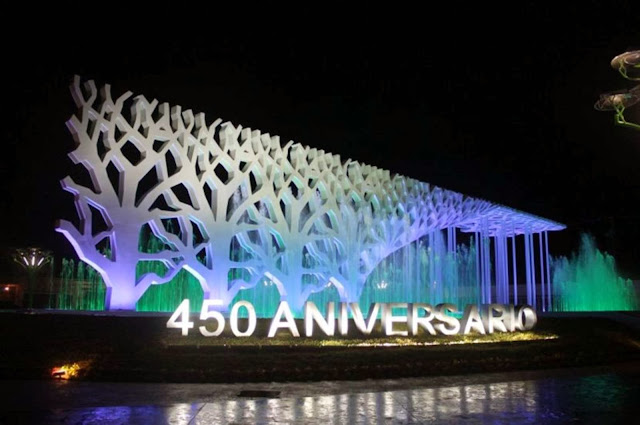Considering the great importance of all public spaces and the ongoing transformation of the city, a national competition was created to build the historic landmark “Hito” in honor of the 450th anniversary of the foundation of the city of Durango, Dgo. Mexico.
To foster a piece of art that strengthens the people’s identity and strong hold with the city and its history, the selection criteria is focused in the idea that the winning project should remind Durango’s society of its cultural, economical, political and social roots that have founded the city; as well as to represent the value of a traditional town full of values such as Durango.
In the framework of the XII Biennial of Architecture which takes place in the state’s capital, was presented the award to the project named “Hito, a fact" developed by the architect Eugenio Soto Landeros originally from Durango, Dgo., and his team Workshop Architecture and Movement / TAM.
Items marked by the coat of arms of Durango say. - The coat of arms of Durango has the following elements: a brown oak tree, with abundant foliage in vivid green, two wolves with running attitude in a blue background, two green palm branches in both sides of the shield, which are linked by their stems with a red bow in the bottom ... that is why we consider the oak tree as the main element of the coat of arms.
The tree has a symbolic meaning in all cultures of the world. with protective and nourishing functions, it represents the goddess mother, deeply rooted in the soil, from where it extracts water and tries to reach heaven and eternity, acting as the hub of the world.
The tree is related to the symbolism of the pillars and mountains. Each tree, tree species and group of trees has its own symbolic associations. Evergreen trees represent immortality, while fruiting trees are considered life, the forests tend to be magical places where mysterious phenomena occur.
The concept comes from the oak silhouette representing the presence of life, when multiplied it creates a forest of trees, a continuity, the monolithic form of the composition of the main element where the wall becomes a cover supported by thin random columns simulating the natural order of an oak forest.
The wall slightly floats until it gently gets to the cover over the landscape of the square. In a higher level than the square, this uproots from the water mirror in an elliptical form with white background and the terrace where the visitor can directly relate to the tree and in contact with water, allowing them to live the monumental oak and feel surrounded by the forest - square.
Location:Durango, Mexico
Architect: Eugenio Soto Landeros
Colaboration: Arq. Leopoldo Orrante Cerrillo / Tam
Year: 2013
Client: Municipality of Durango














